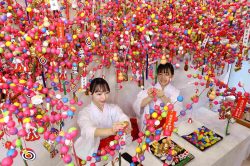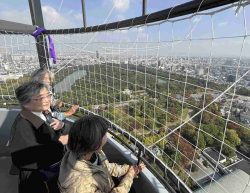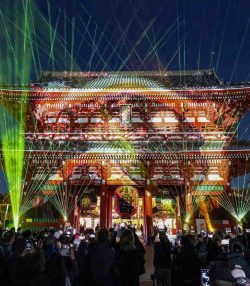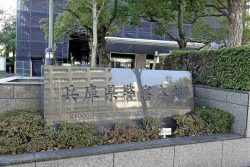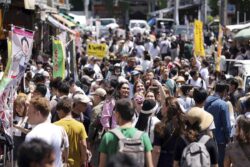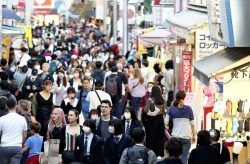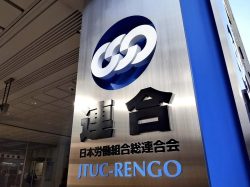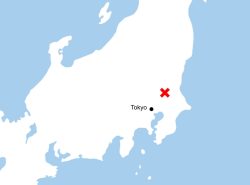Japan Tourism / Sky Lanterns Light Up Night Sky in Japan’s Hanamaki Area in Iwate Prefecture

Each lantern is launched by two or more people, lighting up their faces before disappearing into the night sky.

13:31 JST, January 29, 2025

Fireworks are set off to coincide with the sky lantern launch event, adding color to the winter night sky.
HANAMAKI, Iwate — Visitors launched sky lanterns one after another into the starry sky of Hanamaki, Iwate Prefecture, emitting soft orange light in the hope that their wishes would come true. Fireworks were also set off, adding color to the night sky.
I had entered the world of “Night on the Galactic Railroad” by Kenji Miyazawa (1896-1933), a writer who was from Hanamaki. He must have got the idea for the story while looking at the sky at night.
The yearly event is held on the snow-covered ski resort of the Namari Onsen hot spa area and is scheduled to be held a total of five times — twice in January and three times in February — this year. Participation is limited to people who are staying overnight in the Hanamaki Onsenkyo cluster of onsen hot spa areas, such as Hanamaki Onsen and Osawa Onsen, in addition to Namari Onsen. Visitors are required to make reservations with the lodging facilities where they stay. The event will be canceled if there is no snow or if rain or winds affect the area.
The sky lanterns are a type of hot air balloon found in Thailand, Taiwan and other Asian countries. They are traditionally used for communication and prayer. They look stunning in the night sky, so flying them is a popular activity. The event in Hanamaki started in 2018 as a new winter attraction.
After checking in to their lodgings, visitors each receive a sky lantern made of washi Japanese paper and bamboo, and can write their wishes on it. Once the lanterns are prepared, a free shuttle service takes them to the event site.

Visitors release sky lanterns from their hands, which is a precious experience.
The event starts at 6 p.m. and lasts about 30 minutes. The sky lanterns held by visitors are lit by local workers and released into the air almost in unison with the nostalgic sound of a steam locomotive whistle.
The lanterns, 80 centimeters long and glowing in soft orange, rise as if they are being absorbed into the night sky. The surroundings are pitch black with all lights turned off. Watching the sky lanterns dancing in the dark night is a refreshing experience.
When the sky is clear, the lanterns and the stars can be seen together.

A rotenburo open-air bath in the Osawa Onsen hot spa area, which was visited by writer Kenji Miyazawa. Osawa Onsen is part of the Hanamaki Onsenkyo cluster of hot spa areas.
After the event, the shuttle bus returns to the lodging facilities, where they can warm up in a hot spring. Many facilities have nice rotenburo open-air baths with views of the beautiful snow-covered landscape.
Looking up at the starry sky while soaking in the rotenburo bath, you can recall the steam locomotive whistle you heard during the event. You will be back in the world of the Galactic Railroad.
During the season, Hanamaki Central Park, located near Hanamaki Station on the Tohoku Line, will be lit up until Feb. 16.

“Taroshi Fall” is actually a giant icicle as high as about 13 meters.
In addition, the “Taroshi Fall,” a 40-minute drive from Hanamaki Station, is a must-see. It is not a real waterfall, but gives off the appearance of one during winter when mountain water drops falling into a river freeze midway. This forms a large icicle which looks like a waterfall. Its width, which once reached 8 meters, varies depending on the season’s weather. Every year on Feb. 11, an event is held to measure the width of the year’s icicle and predict the year’s harvest.
Visitors to Hanamaki can enjoy the impressive winter scenes presented by snow, ice and sky lanterns.
The sky lantern event is scheduled to be held on Feb. 2, 11 and 16, from 6 p.m. to 6:30 p.m. It costs ¥1,500 to participate, with lanterns costing ¥1,000 each. A free shuttle service is provided between lodging facilities in Hanamaki Onsenkyo and the event site.
***
Japan Tourism is presented in collaboration with Ryoko Yomiuri Publication, which publishes Ryoko Yomiuri, a monthly travel magazine. If you are interested in the original Japanese version of this story, click here.
"Features" POPULAR ARTICLE
-

Sanrio to Open Museum in Yamanashi Pref. Dedicated to Founder, Exhibits Include Hello Kitty, Other Characters
-
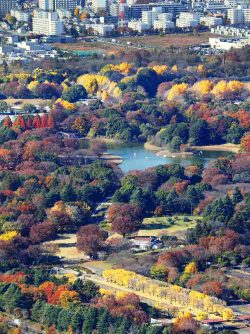
Autumn Foliage Surrounds Visitors to Tokyo’s Showa Kinen Park
-

My Daughter No Longer Speaks to Me, But I Want to See Her and My Grandchild
-

Kumamoto: Public Bath Refurbished as Library Where You Can Chat, Take Photos
-

Frozen Vegetables: Demand Rises for Convenient, Tasty Domestic Produce
JN ACCESS RANKING
-

Keidanren Chairman Yoshinobu Tsutsui Visits Kashiwazaki-Kariwa Nuclear Power Plant; Inspects New Emergency Safety System
-
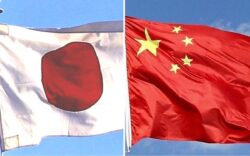
Imports of Rare Earths from China Facing Delays, May Be Caused by Deterioration of Japan-China Relations
-

University of Tokyo Professor Discusses Japanese Economic Security in Interview Ahead of Forum
-
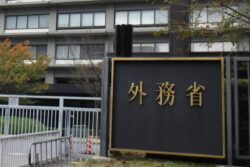
Japan Pulls out of Vietnam Nuclear Project, Complicating Hanoi’s Power Plans
-

Govt Aims to Expand NISA Program Lineup, Abolish Age Restriction




